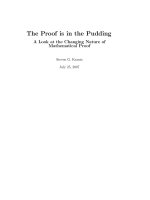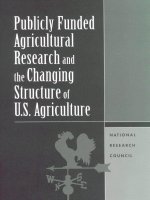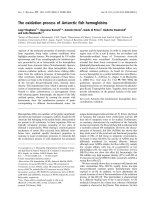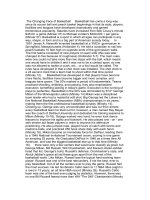the changing fortunes of antarctic penguins ex6
Bạn đang xem bản rút gọn của tài liệu. Xem và tải ngay bản đầy đủ của tài liệu tại đây (58.62 KB, 4 trang )
Unit 1: Exercise 6
Read the information. Then do the IELTS Reading test below.
Answer the questions below. Choose NO MORE THAN TWO
WORDS AND/OR A NUMBER from the passage for each answer.
Write your answers.
Now that you have an idea of the content of the different paragraphs,
you can spend time reading the passage in detail to find the answers
to the questions. The questions in this task type will follow the order of
the text.
At the end, check your answers carefully:
Have you written the correct number of words for each answer?
Here, it can be one word or two words. It can also be a number,
or one word and a number. It cannot be three words or more.
Are all the words you have written actually in the passage? You
mustn’t change the words in any way.
Did you spell all the words correctly?
The changing fortunes of Antarctic penguins
Robert Gates explains how climate change has started to affect the
natural habitat of the Adélie penguin
A The effects of climate change are complex, with scientists
constantly trying to understand how ecosystems are affected.
Nowhere is this more so than in the Antarctic – a place where no
humans live permanently, but which nevertheless is undergoing
change due to human interference.
B Over the last five years, scientists have been examining the
populations of different types of penguin that inhabit the Antarctic
continent. In particular, they have been looking at penguins living on
Ross Island – a huge island connected to the Antarctic mainland by a
permanent sheet of ice, and formed from four large volcanoes, one of
which is still active. On the western side of Ross Island is Cape
Royds, home to a colony of Adélie penguins. In 2000, there were
estimated to be about 4,000 Adélie nests, but a survey carried out in
the last few months found that the number had fallen to 2,100.
C Scientists say there are two main reasons for the population decline
in this part of Ross Island. Firstly, Adélies cannot lay their eggs directly
onto ice or snow. However, the average winter air temperature of the
area has risen in the past half century. This causes more snow to fall,
which buries the rocks on which Adélie penguins would typically
construct their nests. Secondly, after a female Adélie lays her egg, she
walks to the sea in search of food, while the male remains behind to
hatch the egg. As soon as the female reaches an area of open sea,
she will dive into the water and start feeding. When the female returns
with fish for the penguin chick to eat, the hungry male also hurries off
to reach the sea. In previous centuries, the walk would have been
relatively short, between 15 and 20 kilometres. But in 2000, a large
iceberg blocked the mouth of McMurdo Sound, where many Adélie
penguins went to find food. At the same time, the ice in the bay at
Cape Royds failed to break up as it had done in the past. This meant
the Adélies then had to walk much further over the ice – often up to 75
kilometres – before they could reach the ocean. The result was often
that the parent waiting on the nest became too hungry to wait any
longer, and the eggs were abandoned.
D Elsewhere on Ross Island, in contrast to McMurdo Sound, the
situation is more encouraging. At Cape Crozier, Adélie penguins are
thriving. The colony is now thought to have an estimated 230,000
breeding pairs, an upturn of 20% over the last three decades.
Penguins nesting on this part of Ross Island may actually be
benefitting from human activity, scientists suspect. In 1996, a fishing
company opened near the area, and started fishing for vast quantities
of Chilean sea bass – otherwise known as the Patagonian toothfish.
As both the Adélies and the sea bass eat silverfish, competition for
this food source has now been dramatically reduced, and this may
partly explain why penguin numbers have risen at Cape Crozier.
1 What geographical features have created the land of Ross Island?
2 How many Adélie penguin nests were counted at Cape Royds?
3 On what type of surface do Adélie penguins usually choose to build
their nests?
4 What has, in the past, prevented penguins from reaching the open
sea in the McMurdo Sound?
5 Approximately, what distance did Adélie penguins then have to
travel to get to the sea?
Ex 6:
1.
2.
3.
4.
5.
four volcanoes
2,100
Rocks
large iceberg
75 kilometres









